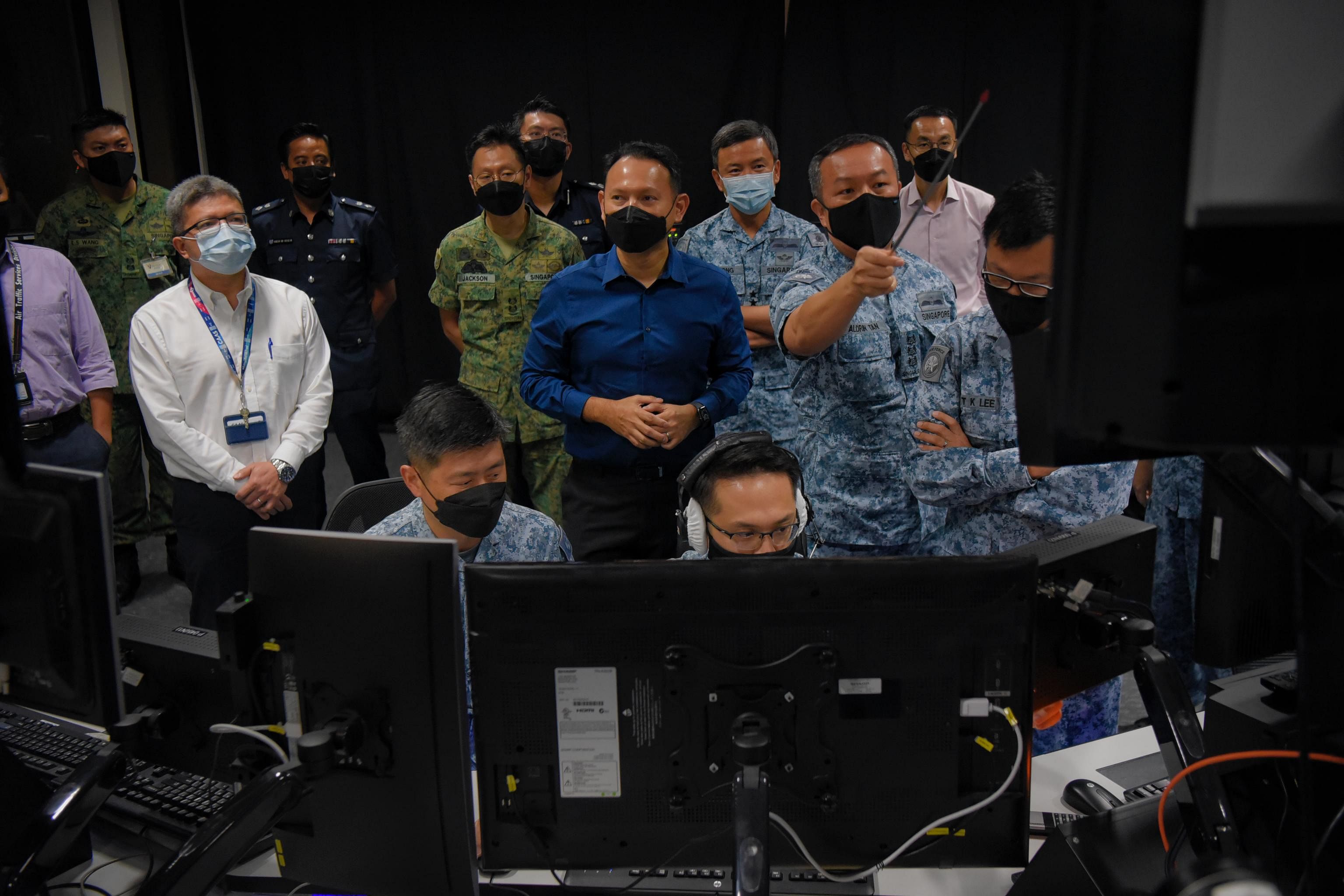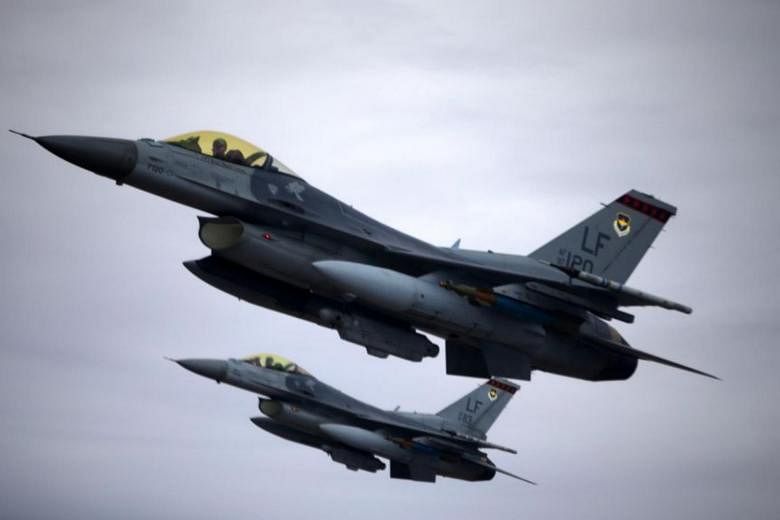SINGAPORE - Upon receiving an anonymous e-mail alert about a possible bomb threat on board a civil aircraft flying into Singapore from the South China Sea, the Singapore authorities took immediate action.
Within minutes of establishing the threat, two Republic of Singapore Air Force (RSAF) F-16 fighters were scrambled to identify, intercept and check whether the "hijacked" aircraft complied with instructions.
The plane was then escorted to land at Changi Airport. In an actual emergency, the Singapore Police Force (SPF) would secure the aircraft for follow-up action.
On Friday (March 11), this scenario was played out to test and strengthen response coordination among government agencies in countering air threats, during an air defence drill called Exercise Vigilant Shield.
The intelligence received by the Civil Aviation Authority of Singapore (CAAS) was relayed to the RSAF and SPF. At the same time, the air force worked with the aviation authority to keep away other civilian air traffic.
Senior Minister of State for Defence Zaqy Mohamad, who observed the exercise, said that in handling such threats, it was important to minimise the disruption to commercial operations, as well as the impact on the safety of the civilian population.
On how global developments such as the ongoing war in Ukraine have underscored the importance of such exercises, Mr Zaqy said Singapore's lack of strategic depth makes good intelligence and quick response even more crucial.
"In Singapore, it takes a few minutes before you have to react and decide what to do. Therefore, tight integration and quick coordination are extremely important for us," he told reporters.
The media was invited to observe the exercise at the Singapore Air Traffic Control Centre in the Changi area. The previous two iterations of the exercise, in 2016 and 2019, also involved hijacked commercial aircraft scenarios.
Asked if the scenario was still relevant, commander of the high-readiness Air Defence Task Force, Colonel Koh Ee Wen, said that "this is a basic scenario that we must be capable of (handling)".
The task force - which organised the exercise - also does proactive intelligence work on a daily basis to assess whether aircraft flying to Singapore pose a threat.
"We won't wait until the e-mail appears," said Col Koh, 44, referring to the alert given to CAAS in Friday's scenario.

On average, the RSAF responds to more than 350 aerial threat incidents each year, even during the Covid-19 pandemic.
For the exercise, the RSAF deployed assets such as the F-16C/D fighter aircraft, Aster 30 missile system and RBS 70 ground-based air defence systems. An RSAF Multi-Role Tanker Transport played the role of the "hijacked" civil airliner.
Fighter pilot Jireh Ang, 36, one of the participants in the exercise, flew one of the two F-16s that were scrambled in March 2019 to deal with Singapore Airlines Flight SQ423, which was involved in a bomb hoax.
"Essentially, before my coffee was cold, I was already on afterburners, taking off on activation within a moment's notice," said Major Ang, who has been in the service for about 15 years.
This took place just a few weeks after the 2019 Exercise Vigilant Shield, in which Major Ang also participated.
"We're still human, so being able to manage the anxiety (when activated) and knowing the training we've conducted... really gave me the confidence to conduct the mission successfully."


